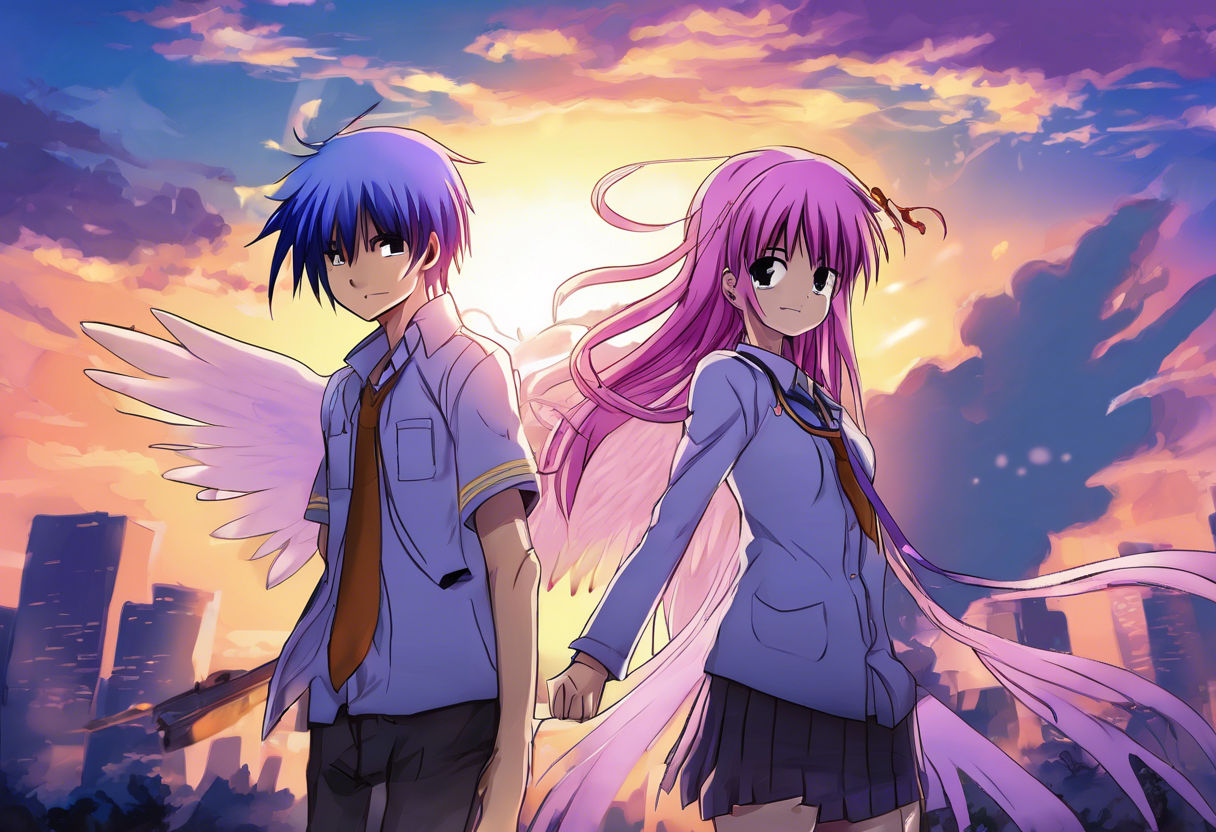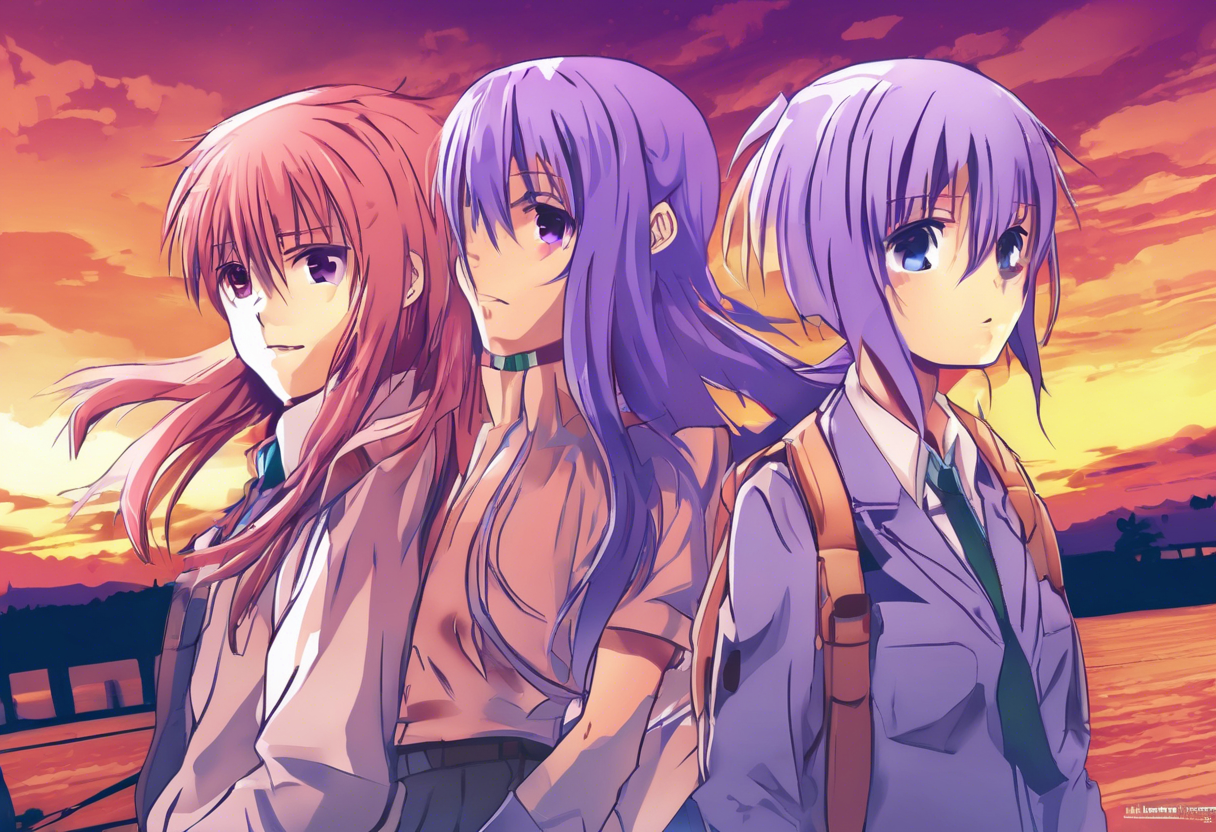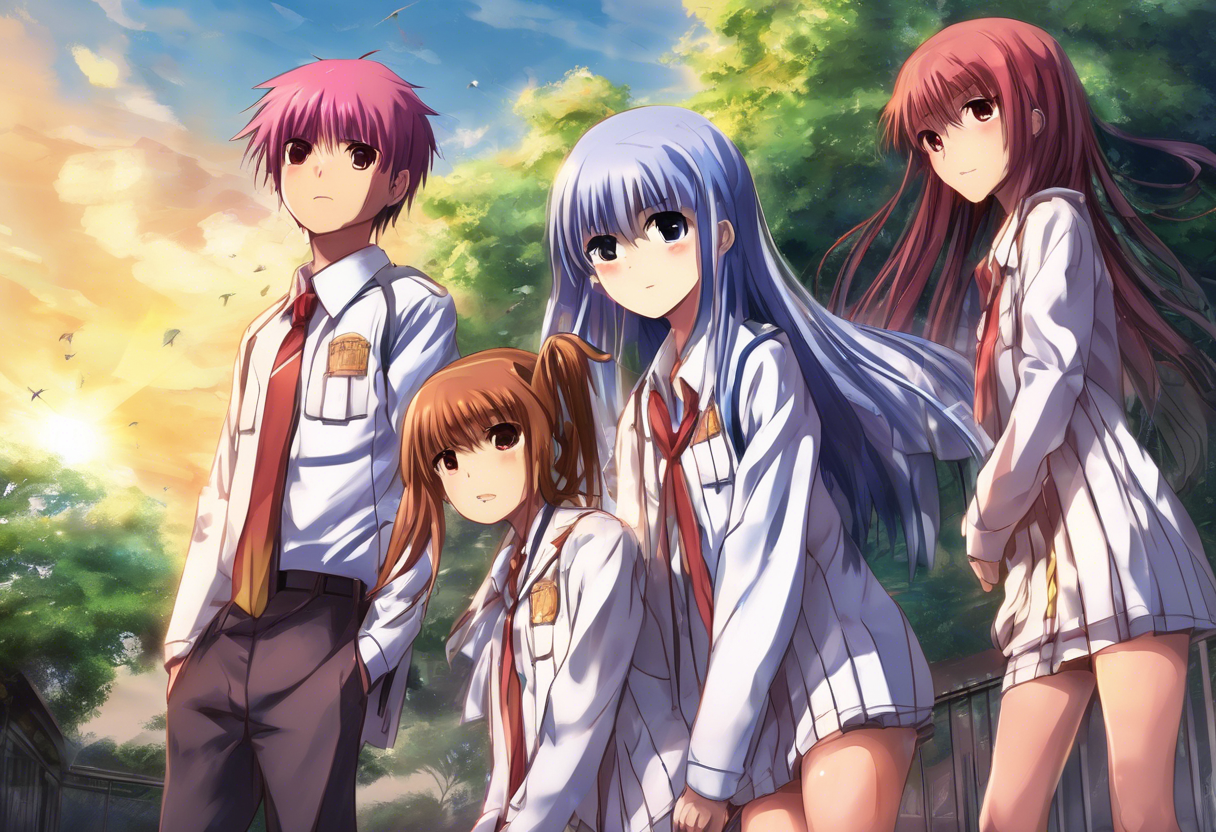Angel Beats! – Episode 1: Departure is the introductory episode to the acclaimed anime series Angel Beats! that premiered in 2010. Crafted by key creative figures including director Seiji Kishi, writer Jun Maeda, and producer Aniplex, the episode sets the foundation for a unique blend of action, drama, and supernatural elements that distinguish it within the anime genre. The series is produced by P.A. Works and Aniplex and is notable for its integration of emotional storytelling, dynamic character interactions, and a distinctive afterlife school setting. With a compelling storyline that mixes humor, tragedy, and existential questions, Departure introduces audiences to a mysterious world where deceased youths grapple with past regrets while fighting an enigmatic figure known as Angel. This episode first aired on April 3, 2010, immediately attracting attention for its bold premise and aesthetic style, setting it apart from typical high school or supernatural anime by exploring themes of life, death, and redemption in a vibrant, action-packed narrative environment [2][4].
Departure opens with Yuzuru Otonashi awakening in a hospital, confused and disoriented, with no memory of his past life. This amnesiac beginning is quintessential in drawing viewers into the mystery surrounding the afterlife world he inhabits. Otonashi’s curiosity is piqued as he escapes the hospital only to be confronted by a girl wielding a sniper rifle—an immediate tension-filled encounter that crystallizes the stakes of this new reality. The girl, later understood to be Yuri Nakamura, leads the Afterlife Battlefront, an organization of students who rebel against the authoritarian figure known as Angel, who ostensibly governs the school and the afterlife realm. The revelation that none of them are alive but are instead trapped in a purgatory-like school setting sets the tone: a liminal space where souls who died with regrets must come to terms with their pasts before they can move on.
The episode swiftly transitions from Otonashi’s bewilderment to the introduction of the ongoing conflict: the Battlefront’s struggle against Angel. The school itself is strange—empty of conventional mundane concerns like illness or real authority—but rife with chaos and violence. Otonashi grapples with the surreal and hostile environment, trying to understand his role while stumbling into confrontations with Angel herself, who is depicted as both eerie and powerful. Notably, Otonashi’s first encounter with Angel ends with him being stabbed, only to discover he cannot die again, underscoring the unique rules governing their existence in this afterlife world.
The narrative moves fluidly between moments of grim seriousness and sudden comedic relief, reflecting the episode’s tonal shifts. After suffering physical and psychic jolts—ranging from an absurd attack by a man wielding a scythe who assaults him without apparent reason, to slapstick moments like a giant hammer trap in the principal’s office—Otonashi explores the school grounds and the social structure of this strange afterlife. He eventually discovers the ‘SSS’ (Shinda Sekai Sensen, or Afterlife Battlefront) members deliberating over their name in a lifeless manner, encapsulating a sense of futility and aimlessness amongst the group despite their rebellious activism. This mix of dark humor and existential dread encapsulates much of the episode’s narrative texture, highlighting the characters’ emotional complexity despite their supernatural plight.
Gradually, Otonashi begins to engage more deeply with other key characters, gaining insight into their motivations and the nature of the conflict. The mysterious Angel is revealed to be Kanade Tachibana—the Student Council President—whose powers and intentions are initially misunderstood. The episode also teases deeper backstories and hidden regrets among the cast, suggesting profound emotional layers beneath their combative exteriors. For instance, the performance by Girl’s Dead Monster, the in-universe band led by Masami Iwasawa, adds an evocative emotional dimension and commentary on the afterlife state, further immersing viewers in this limbo between life and death.
Throughout Departure, the setting serves as a microcosm of unresolved lives, cementing the central narrative arc around the Battlefront’s fight to defy an oppressive fate encoded within the afterlife. The story deftly balances action sequences with moments of introspection and emotional resonance, providing a rich narrative ground that extends well beyond the supernatural premise. The characters’ struggles against Angel simultaneously symbolize their struggles against their own unresolved regrets, positioning the episode as both a thrilling introduction and a thematic exploration of acceptance, loss, and the search for meaning in death.
One of the episode’s standout features is its wrap of existential themes with character-driven storytelling. It employs the school as a symbolic afterlife arena—a place that evokes the transitional phase between life and what lies beyond, rife with tension, rebellion, and moments of connection. The character dynamics, especially the tentative alliance and eventual trust developing between Otonashi and Yuri and others in the Battlefront, foreground the human aspect of this metaphysical conflict, allowing the audience to relate to the characters’ hopes, fears, and desires despite their otherworldly circumstances.
In terms of themes and symbolism, Departure explores central motifs of life after death, regret, and the meaning of existence through its setting and characters. The afterlife school itself is a metaphor for unresolved trauma and the difficulties of moving on after death. Angel, as an opponent, symbolizes fate or perhaps a higher force compelling souls to accept their situation passively, while the Battlefront represents human resistance and the enduring refusal to give up one’s agency even beyond death. The episode also uses musical performances and school-related imagery as symbols of emotional expression, societal structures, and personal identity. The constant interplay of light and shadow, and the contrast between moments of violence and sudden levity, further emphasize the tension between despair and hope. The narrative invites viewers to consider the ways people confront loss, memory, and redemption, making it broadly resonant beyond the realm of fantasy or supernatural fiction [4][2].
Upon release, Angel Beats! – Episode 1: Departure garnered significant attention and praise for its ambitious premise and emotional weight. The episode’s blend of action, comedy, and drama alongside strong character design and animation quality established it as a memorable entry in the anime medium. Its cultural impact extended beyond the show itself, inspiring a devoted fanbase, discussions about its themes on online forums, and spawning related media including soundtracks, manga adaptations, and spin-offs. The unique concept of an afterlife school populated by rebellious youths captured imaginations and contributed to the show becoming a defining work of its era within the 2010s anime landscape [2][4].
Critical reception at the time of airing was generally positive, with reviewers lauding its narrative depth and production values but also noting its occasional tonal inconsistencies—particularly its attempts to oscillate between dark themes and slapstick humor. Some critics argued that these shifts could undermine the story’s emotional impact or confuse viewers about its genre intentions. Nonetheless, the character introductions, world-building, and thematic ambition were widely seen as strengths, earning Departure recognition as a standout pilot episode for a series that would unfold with emotional complexity and philosophical reflection. Over the years, the episode has maintained favorable retrospectives, regarded as a strong opening that sets the stage for a compelling journey [3][4].
The lasting legacy of Angel Beats! – Episode 1: Departure lies in its unique combination of storytelling, character development, and thematic exploration within the anime medium. It continues to inspire creators and audiences by demonstrating how genre blending and metaphysical storytelling can engage viewers emotionally and intellectually. Its use of an afterlife school setting as a narrative device has influenced subsequent works that mix supernatural elements with psychological and existential inquiry. Additionally, the episode helped cement the reputations of its creative team, especially Jun Maeda, as architects of emotionally resonant anime narratives. In cinematic history, Departure is remembered as a pioneering introduction that challenged conventional anime tropes and expanded the possibilities for storytelling within the medium [4].







